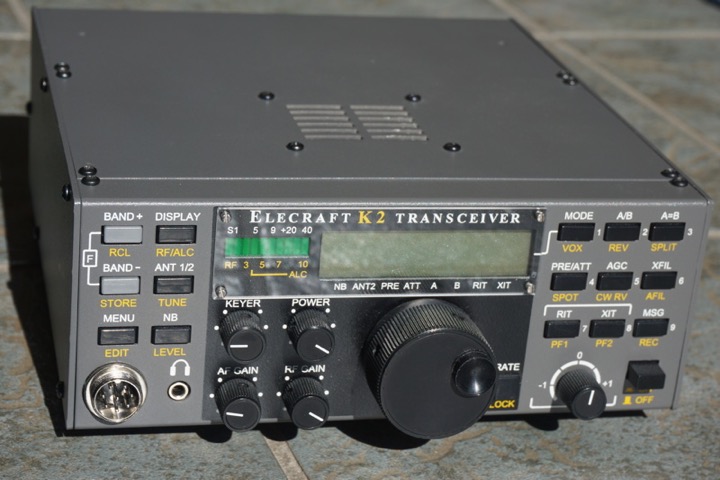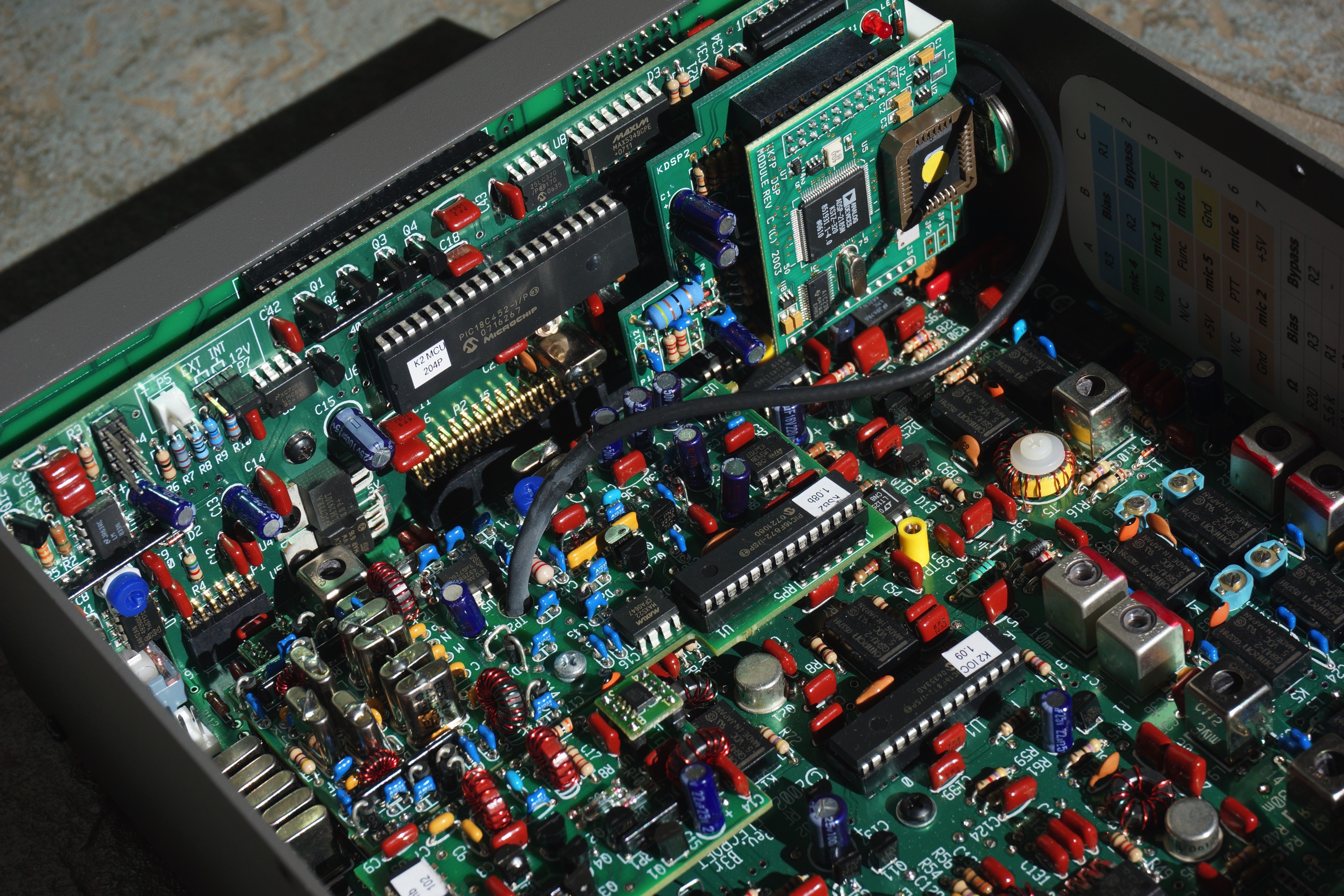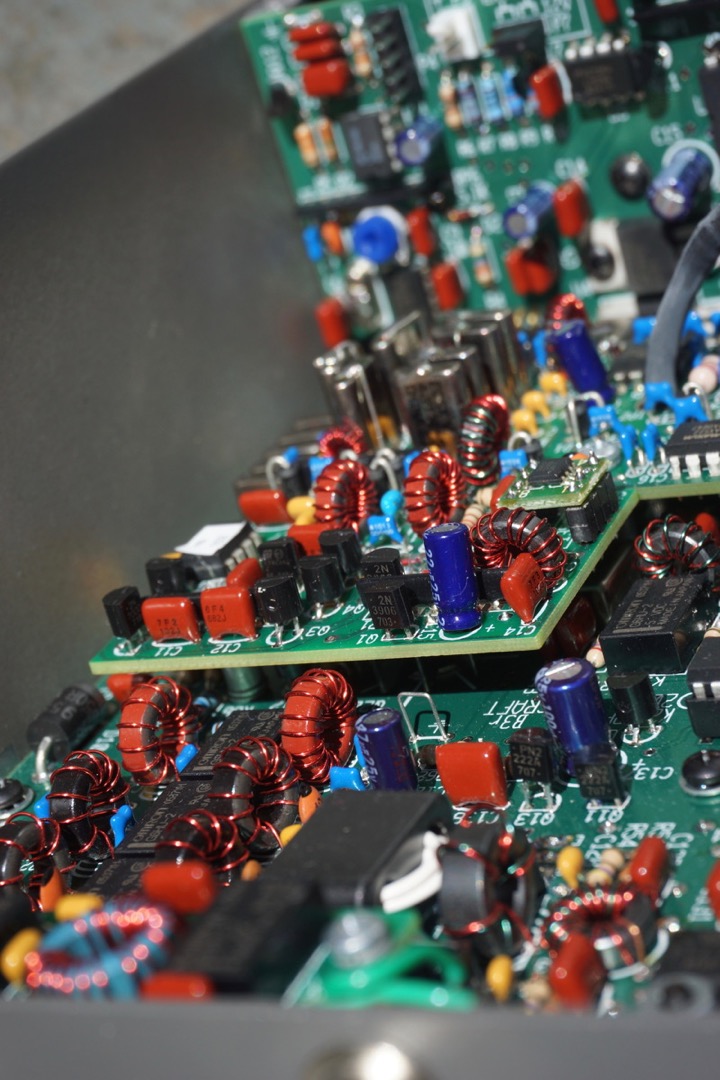Elecraft K2 Transceiver
For years the Elecraft K2 was a staple among DXpeditions with its extremely sensitive receiver, solid CW performance, and good signal rejection. I bought my first K2 because of these reasons, of course, but mostly this was a chance for me to do something I couldn't do as a kid: build a big Heathkit kit. Elecraft isn't Heathkit, but it was as close as this modern age would allow, and I wasn't about to miss another opportunity.
I remember when the kit arrived. Everything was thoughtfully organized, the manual was expressive and specific, enough that I had confidence through each step. There were a couple of moments when I spent time scratching my head, but they passed quickly, and were probably due more to my fatigue than their manual. I loved working on this radio so much that it was hard for me to stop at times.
The entire radio, transceiver, SSB add-on, noise blanker, DSP, automatic tuner, and more required about 40 hours of slow, methodical work—and it is some of the very best hours I've experienced in the hobby. The gratification one feels when you operate a radio you built with your own hands is indescribable.
I remember when the kit arrived. Everything was thoughtfully organized, the manual was expressive and specific, enough that I had confidence through each step. There were a couple of moments when I spent time scratching my head, but they passed quickly, and were probably due more to my fatigue than their manual. I loved working on this radio so much that it was hard for me to stop at times.
The entire radio, transceiver, SSB add-on, noise blanker, DSP, automatic tuner, and more required about 40 hours of slow, methodical work—and it is some of the very best hours I've experienced in the hobby. The gratification one feels when you operate a radio you built with your own hands is indescribable.

Elecraft K2 (s/n 4649) assembled in November of 2007

The DSP card with shown extending from the front panel board
Just one of the many things I admire about Elecraft's founders Wayne Burdick, N6KR, and Eric Swartz, WA6HHQ, is how they have designed radios that are not only high-performers, but those radios are also beautiful, beautiful in their designs, and objectively beautiful also in their appearance. Take a look at these pictures on this page and see if you don't agree.
The K2 is now 20 years old. Elecraft shipped the first K2s in January of 1999. They are still on sale today, and if you have the money, they are still worthy of your time and efforts. I became a better builder because of my time assembling my K2s (I have two), gained more intuition about how radios should be designed, and how they should perform, how they should respond to the user, and sound on the air from these radios than any of the others in my shack. In many ways, they are my ham radio life's first love.
I took my K2 on a trip to San Francisco and tried to operate in Golden Gate park. I had a few problems, but a quick trip to Radio Shack (do you miss Radio Shack?) for a small set of tools and I was able to repair the radio. How many radios can you do that with in your collection?
The San Fransisco trip continued on to the Kona side of the big island of Hawai'i where I mounted an antenna the railing of my 6th floor hotel room and worked all over the Pacific using only 10 watts. It was on this trip I learned to never reveal my output power until after I had gotten the signal report!
That trip was before I began thinking about the 100 Pound DXpedition, but the successes I had planted the seed of the idea. So, in many ways, even my 100 Pound DXpedition initiative can be traced back to Elecraft.
Elecraft now builds some of the most sought after gear in the hobby. Their newer stuff can be bought as a "kit", but that involves just bolting boards and panels together. The heyday of through-hold parts has probably come to an end, but I was able to lavish in it a few years, at least.
The K2 is now 20 years old. Elecraft shipped the first K2s in January of 1999. They are still on sale today, and if you have the money, they are still worthy of your time and efforts. I became a better builder because of my time assembling my K2s (I have two), gained more intuition about how radios should be designed, and how they should perform, how they should respond to the user, and sound on the air from these radios than any of the others in my shack. In many ways, they are my ham radio life's first love.
I took my K2 on a trip to San Francisco and tried to operate in Golden Gate park. I had a few problems, but a quick trip to Radio Shack (do you miss Radio Shack?) for a small set of tools and I was able to repair the radio. How many radios can you do that with in your collection?
The San Fransisco trip continued on to the Kona side of the big island of Hawai'i where I mounted an antenna the railing of my 6th floor hotel room and worked all over the Pacific using only 10 watts. It was on this trip I learned to never reveal my output power until after I had gotten the signal report!
That trip was before I began thinking about the 100 Pound DXpedition, but the successes I had planted the seed of the idea. So, in many ways, even my 100 Pound DXpedition initiative can be traced back to Elecraft.
Elecraft now builds some of the most sought after gear in the hobby. Their newer stuff can be bought as a "kit", but that involves just bolting boards and panels together. The heyday of through-hold parts has probably come to an end, but I was able to lavish in it a few years, at least.

Low pass filters in front
Crystal filters shown in the rear


